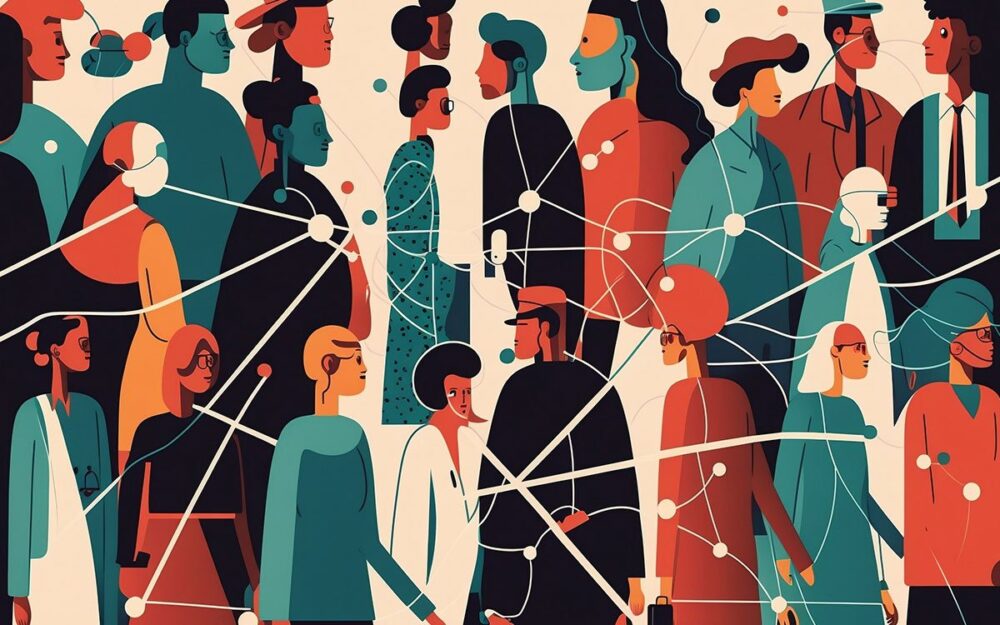
Shanna Mays of Tucson, Arizona, has fought for years for services and accommodation for her brother, who has sustained numerous traumatic brain injuries (TBIs). From sports-related concussions during his youth to injuries from assaults and drug overdoses in adolescence and adulthood, it has been an uphill battle to meet his health needs and keep him housed and disengaged from the justice system.
At first blush, others might describe Mays’s brother as neurotypical. “Until you are talking with him in a way that reveals aspects of impairment in executive functioning, you would have all the usual expectations of how he should talk, act, and respond to the environment around him and the people in it,” she tells NPQ. “That might sound minor, but it leads to endless misunderstandings and frustrations due to missed social cues. It can be difficult for him to plan, critically analyze information, accurately gauge consequences, and easily leads to problems with relationships, education, employment, self-advocacy, and in many cases the law.”
Brain injury is incredibly common. A TBI happens every 23 seconds in the US. Recently, Mays found herself fighting on two fronts after her young son sustained the even-less-understood “non-traumatic acquired brain injury” when an infection caused severe brain swelling when he was a toddler.
Mays reports that between advocating for her brother and son, she has come to understand firsthand how terribly our medical, behavioral health, and education systems are designed to accommodate children and adults struggling with the long-term cognitive consequences of brain injuries. As the neurological mysteries and long-term impact of COVID-19 began to present themselves, Mays is not alone in wondering just how our communities and the human service delivery system are going to prevent those with new cognitive impairment due to COVID-19 from sliding into the proverbial abyss of homelessness, addiction, trafficking, abuse, and incarceration.
Navigating the Unknown
It seems the more we learn about COVID-19, the more insidious this virus becomes. While much attention has been paid to those that we have tragically lost and how to keep society functioning while the pandemic rages on, the nonprofit sector and funders need to take a hard look at how to serve those who survive COVID-19 but at a price, sustained cognitive impairment. In addition to its effects on pulmonary systems, ongoing research reveals COVID-19 has devastating short- and long-term cognitive effects for some survivors. At the severe end, this includes brain damage.
COVID-19 can also increase the risk for stroke even in youthful, formerly healthy survivors. Stroke is an all-too-common cause of acquired brain injury. Other common side effects range from less severe problems like loss of smell (a disruption in the neurons involved in the olfactory system) to those that seriously disrupt one’s quality of life, like the inability to regulate one’s blood pressure. The attack on the body’s central nervous system by COVID-19 can manifest in headaches, dizziness, cerebrovascular disease, epilepsy, encephalopathy or ataxia (losing control of bodily functions). COVID survivors often describe “brain fog,” where they can’t think straight, are easily exhausted, or fumble for the right words in recovery.
It has been reported that one third of those suffering from acute respiratory failure from COVID also experience cognitive impairment comparable to those with moderate traumatic brain injury. This includes loss of the brain’s executive function, leading to difficulties tracking daily responsibilities, understanding the written word, and communicating verbally. What’s more, a recent study suggests that many who recover from the virus suffer significant brain decline, with the worst cases having the potential of effectively aging a brain by 10 years.
Adding Stress to Vulnerable Populations
“If we have learned anything from our work with brain injury survivors who are part of vulnerable populations, such as those with chronic housing challenges or domestic violence survivors, it is that the brain injury adds significantly to their vulnerability,” Will Grove, a Phoenix-based Certified Brain Injury Specialist for the nonprofit Brain Injury Alliance, observes. Lasting cognitive symptoms resulting from illness fall under the category of “acquired brain injury” and can significantly impair one’s ability to function independently in their daily life.
Sign up for our free newsletters
Subscribe to NPQ's newsletters to have our top stories delivered directly to your inbox.
By signing up, you agree to our privacy policy and terms of use, and to receive messages from NPQ and our partners.
“Deficits resulting from brain injury can drastically affect an individual’s capacity to manage their day, get to necessary appointments, keep employment, and navigate the systems that control their public benefits (Social Security disability, unemployment, etc.) and participate in programs that are designed to help them,” Grove adds.
A case in point is looking at the relationship between housing challenges and brain injury. It is no secret that well before COVID-19, high rates of housing insecurity persisted in the US. The 2013 Annual Homeless Assessment Report to Congress found that more than 610,000 people across the country were homeless at a single point in time (65 percent in emergency shelters or transitional housing and 35 percent in unsheltered locations), with an estimated 109,132 identified as chronically homeless. Half of the homeless population has sustained a traumatic brain injury. The heartbreaking reality is that of the homeless individuals with TBI, 70 percent experienced their first brain injury before they became homeless, meaning the brain injury was part of their destabilization that led to loss of housing.
While having a brain injury can make it harder to keep track of paperwork, make it to appointments, and follow the rules to participate in programs designed to assist, Grove notes that in many states, like Arizona, most individuals with a brain injury diagnosis do not qualify for the direct one-on-one services that would assist with these crucial tasks.
“Nonprofits working with vulnerable adults need to be aware of potential brain injuries with the individuals with whom they work, including those who have survived COVID-19 and may have lingering cognitive deficits, so as to be able to provide the extra one-on-one attention and assistance their clients need,” Grove says.
Funders should be aware that more attention needs to be paid to those who recover, seemingly without serious symptoms, only to face an uphill battle. Nonclinical screening tools like HELPS need to be implemented immediately by human service organizations at client intake and adjusted to ask about survivors of COVID-19 in additional to asking about trauma or injury to the head.
“You would not expect someone who uses a wheelchair for mobility to walk up a flight of stairs to participate in your human service program,” Grove says. “There are those with invisible injuries who need accommodations, and it is not going to be immediately visually noticeable.”
As the layers of this virus/onion get peeled away, we must understand COVID-19’s potential nervous system impact and whether individuals with chronic symptoms will display lasting changes in brain function. Community leaders need to stay focused on how the virus affects the brain and nervous system.—Carrie Collins-Fadell, MPA













